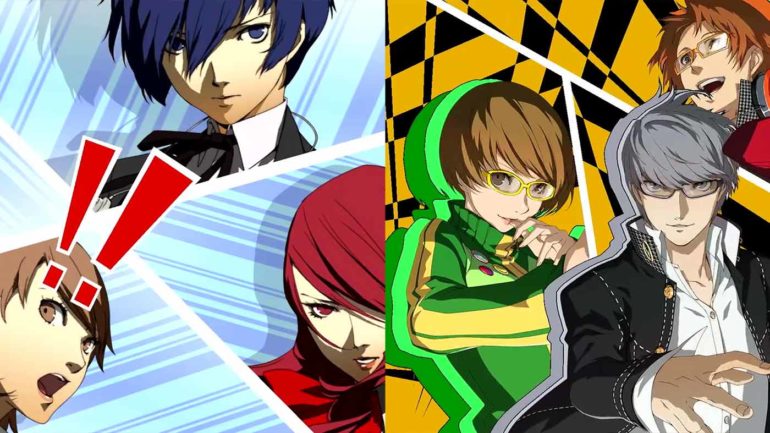Persona 5 was a huge success for the series. Heaps of people jumped into the series for the first time and loved what they found in Atlus’ stylish and somewhat dark JRPG/visual novel hybrid. Until now, you needed a PC or an older PlayStation console if you wanted to go back and play the earlier titles in the series, but no longer! Versions of Persona 3 and Persona 4 are hitting current platforms and in doing so bringing these games to a whole new audience.
If you liked Persona 5, I think you should absolutely give Persona 3 Portable and Persona 4 Golden a chance. I’ve spent a decent chunk of time with both games on PS5 and they’re each great for a lot of the same reasons Persona 5 was so good.
Balancing high school life with dungeon crawling
The core gameplay loop of balancing school life, social life and supernatural dungeon crawling is here in each of these earlier games. Building your relationships in the regular world to explore interesting character stories and have bonuses on the dungeon side of things is as enjoyable as ever. Persona 3 Portable is particularly noteworthy as you can choose between the original male protagonist and a female protagonist who was added in this revision. A whole set of different social options will open up if you do so, giving the game a big boost to replayability.

High-stakes turn-based battles
The battles in Persona 5 were exciting thanks to the battle system that let you really apply pressure to enemies when exploiting their weaknesses, while trying to avoid the same happening to your party. It’s not ultra deep, but straightforward enough to pick up quickly and exciting enough to keep from getting boring. The same system exists in both P3 and P4 and keeps things exciting. It’s an exciting cycle to knock down enemies with weaknesses or critical hits, then finish them off with a Co-op or All-out Attack.
Supernatural teenage drama
The same Persona formula is here for the story too. If you enjoyed the idea of a bunch of high school kids gaining supernatural powers and having to balance regular teenage life with the fate of the world, you’ll be happy to know you’ll get much more of that in the earlier games too. Persona 3 involves a so-called ‘Dark Hour’, an hour that occurs at exactly midnight but is only consciously experienced by a select few, and a mysterious dungeon called Tartarus that holds shadows to fight and secrets to uncover.

P3 is particularly dark in tone, heavily involving trauma and with character animations that simulate suicide on a regular basis – so please take this as a warning if this is a concern for you. Persona 4 is a bit lighter in tone than 3 or 5 with the cast exploring a world behind a TV screen – but still has it’s moments of darkness and drama. Both 3 and 4’s stories are enjoyable in their own ways, and both offer 70-ish hours of twists, turns and dungeons to delve through.
Effortless style
From music to menu animations Persona 5 exudes style. It turns out this was the case with both 3 and 4 from years ago. Each game has it’s own core colour that defines it’s personality. That personality is expressed musically as well. Persona 3 brings with it a pop/hip-hop style while Persona 4 is more a rock infused pop vibe. Each soundtrack is primarily composed by Shoji Meguro who was also responsible for the amazing acid jazz soundtrack of Persona 5.

Some things to keep in mind, though…
While they share many similarities with Persona 5, it’s impossible to ignore the fact these games were originally designed for the PSP and PS Vita. Character models in battle definitely look simple, clearly designed for far weaker hardware than you’ll play these versions on. Persona 3 Portable also lacks the ability to freely walk around outside of dungeons – instead opting for more of a point-and-click interface. Honestly I find it quite efficient and enjoyable to use, but it’s definitely an adjustment from the usual roaming around areas you might be used to from Persona 5.
Since the games have been ported from lower-resolution originals some elements hold up better than others on a larger screen. Character art is wonderfully sharp even on a large TV, as are text elements – but background artwork hasn’t fared as well. Artwork in Persona 3 Portable especially looks pretty blurry when upscaled to TV size. Understandable given they were designed for a 480 x 272 resolution screen, but noticeable nonetheless. It’s absolutely not a deal breaker, but might give the Switch version a bit of an advantage since the upscale will be less noticeable on its handheld 720p screen.

All up though despite these minor shortcomings, as long as you can deal with graphics that were originally made for a PSP or Vita then I think it’s so very much worth going back to these earlier games if you jumped on the Persona train with the latest entry. Each offers a similarly engaging story, characters and gameplay while going in different directions with tone and style, and each is very much worth your time if you were at all a fan of Persona 5.



